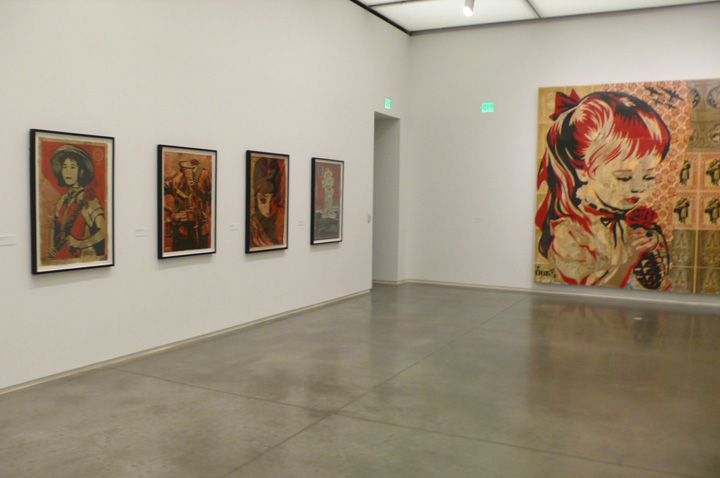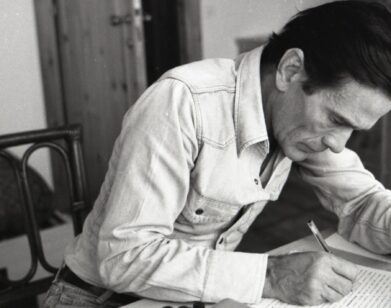On Board with Shepard Fairey
Early in his career, Shepard Fairey was known to distribute stencils of his designs so that you, too, could participate in what he calls “quality dissent.” Fairey’s practice is about proliferating images outside of their usual places of production, and this was a guerrilla tactic to break the rules and challenge the control of images on the street. Since then, with success, of which his ubiquitous Obama T-shirt is only the most recent example, the artist has tested the palatability of street images and their ability to really exist outside the system. He has become a “real” artist in a lot of ways, and with his reltrospective, “Supply & Demand,” the ICA is 20 years of silk screens, works on paper, and two vitrines filled with memorabilia, including a letter from President Obama himself, thanking the artist for his support. And the original Andre the Giant. Pedro H. Alonzo, who, with Emily Moore Brouillet, served as co-curator, says of the exhibition, “The moment is right.”
This is also the latest in a series of collaborations between Fairey and Levi’s, who sponsored the event. On view in vitrines was a pair of jeans designed by Fairey; and in 2002, he designed portraits for a concert sponsored by Levi’s. The label, looking to toughen it’s image by reminding its consumers of punk before Green Day, re-uniting the surviving Sex Pistols, the Buzzcocks, the Damned, and the Circle Jerks for a concert, titled Inland Invasion. Die-hard punks had problems with corporate involvement; John Nikolai of Punk Magazine siad of the event, “The corporate sponsorship gives me the heebie-jeebies. What does one of the world’s largest brand-name apparel marketers and a so-called ‘alternative rock’ radio station that’s hardly any more alternative than it is rock, have to do with punk?” The posters for that concert, make up the Punk Rock Timeline, are included at the ICA. They’re done in a style later used for the Obama poster.
At the press appointment for the show, Fairey arrived late, and he wasn’t wearing Levi’s. He looked dapper in a crisp grey two-button suit. He didn’t do much of the talking, either: We were ushered up to the galleries. amd Alonzo did most of the talking. When Fairey spoke, he had a down to earth way about him, even if he did seem a little tense. He seemed like he needed a brew.
Fairey, who was born in 1970, has been a skater for over two decades, and one of the stories he told during the preview dated to his days as a student of illustration at RISD. He would travel to Boston for its many skateparks. When he first arrived there, he couldn’t find the skateparks, and locals who pointed him to a neighborhood “off Mass Avenue” (accent for emphasis). He began tagging, and as he found more parks, his work served a sort of connect the dots by which Fairey (and his followers) could track him.
Back then, Fairey would have been arrested had he been caught. Now the city of Boston has embraced him with open arms and billing it as a major tourist tattraction. The flags on lampposts serve as a type of beacon throughout Boston. With a team of friends and regular collaborators, he braved the February air and plastered the city with posters and banners. One, “Peace Goddess,” is hanging up right smack on City Hall.
I asked Fairey who he’d like to work with next. “Someone who I really identify with in his music and his politics is John Lennon. So you know, I’d have Yoko over for tea or something. You know, come up with some ideas, that’d be nice.” How about someone still living? “Well, Bob Dylan’s management contacted me about possibly doing a collaboration, so, that’s a great opportunity. I dig him a lot.” All that, and modest.







